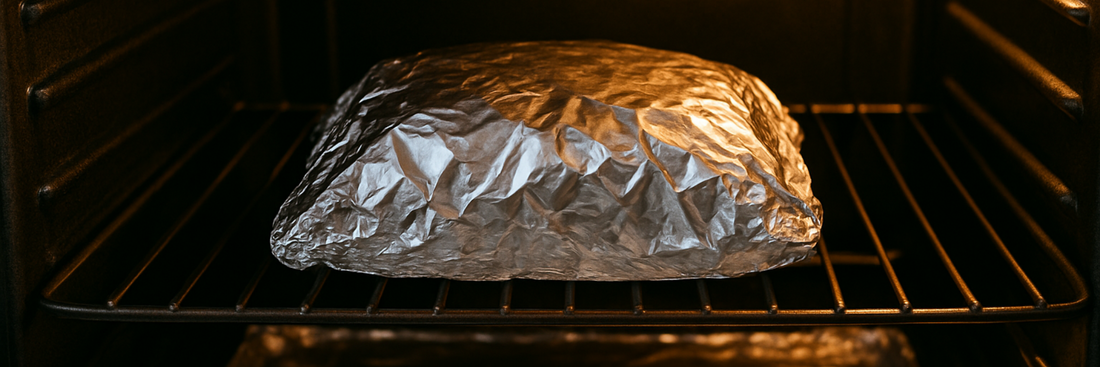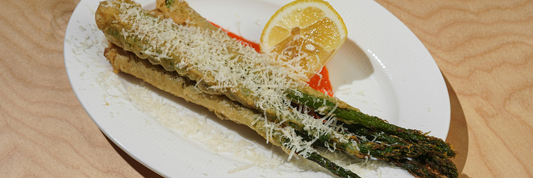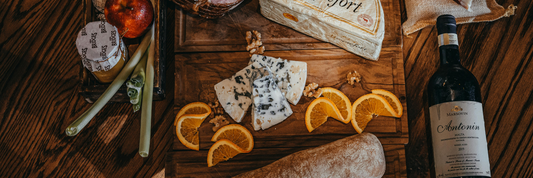Aluminum foil is a staple in most kitchens—ideal for wrapping food, lining trays, or covering dishes during baking. But have you ever pulled a sheet of aluminum foil out of the oven and noticed it didn’t feel hot to the touch? That might seem puzzling considering the oven was set to 350°F or higher. So, why does aluminum foil not feel hot after it's taken out of an oven? The answer lies in the science of heat transfer, thermal properties, and a bit of clever physics.
Thermal Conductivity of Aluminum
One of the main reasons aluminum foil doesn’t feel hot after being removed from an oven is its high thermal conductivity. This means aluminum can quickly transfer heat to other surfaces—like the surrounding air or your hand—almost instantly.
Aluminum is an excellent conductor of heat, which is why it's commonly used in cookware. However, that same property allows it to shed its heat quickly once it's no longer in the oven. As soon as the foil hits cooler air, it begins transferring heat out rapidly, cooling down in seconds.
Low Thermal Mass of Aluminum Foil
Another key factor is thermal mass, or the ability of a material to store heat. Aluminum foil has an extremely low thermal mass due to its thinness and light weight. It doesn't take much energy to heat up, and equally, it doesn’t retain much heat.
When you take a baking tray out of the oven, it stays hot for a long time. That’s because the thick metal holds onto a lot of thermal energy. Aluminum foil, being extremely thin, simply doesn’t have the “room” to store much heat energy in the first place.

Specific Heat Capacity of Aluminum
The specific heat capacity of a material refers to how much energy it takes to raise its temperature. Aluminum’s specific heat is relatively high for a metal, but due to the thinness of foil, the total amount of heat it holds is still very small.
As a result, when you touch aluminum foil after it's been in the oven, you might feel a brief warmth—especially if it’s been layered—but not the scalding heat you’d expect from something that was just in a high-temperature environment.

Surface Area to Volume Ratio
Aluminum foil has a very high surface area relative to its volume, which dramatically increases the rate at which it loses heat. This is known as the surface area to volume ratio, and it's a crucial reason why the foil cools so rapidly.
Since the surface area is large and the volume is minimal, the foil releases heat to the environment extremely efficiently. It cools almost immediately upon exposure to air.
How Heat Transfer Works
There are three main types of heat transfer: conduction, convection, and radiation. In the oven, the foil gets hot mainly through conduction from the hot air and the pan it's in contact with. But the moment you open the oven door, convection (air movement) starts drawing heat out of the foil, especially with cool kitchen air swirling around it.
Moreover, because foil is so thin, radiation plays a minimal role—it doesn’t store radiant heat like a thick ceramic dish might. Once out of the oven, conduction quickly transfers any remaining heat to the air or your hand, making it feel cool almost instantly.
Practical Implications in Cooking
Because it doesn’t retain heat well, aluminum foil is generally safe to touch shortly after being removed from an oven, assuming it's not tightly wrapped around a dense hot object like a baked potato or roast. Those items retain more heat due to higher thermal mass and can cause burns even if the foil itself feels cool.
This rapid cooling is beneficial in many kitchen scenarios, such as when wrapping up hot food for transport. The foil cools down quickly, reducing the risk of burns, while the food inside remains warm longer.
Common Misconceptions About Aluminum Foil and Heat
A frequent misunderstanding is that if something was heated to 400°F, it should feel hot regardless of its mass or thickness. But temperature isn't the only factor—heat content matters more. Aluminum foil may have been at 400°F, but it doesn’t contain much total heat energy.
Example:
Compare a paper-thin aluminum foil sheet with a thick cast iron skillet, both removed from the same 400°F oven. The skillet will stay dangerously hot for minutes. The foil will cool down in seconds. Why? The skillet has more mass, stores more heat, and releases it slowly.

FAQs: People Also Ask
Why aluminum foil feels cool after baking?
Aluminum foil feels cool after baking because it has low thermal mass and loses heat very quickly. Even though it gets hot in the oven, aluminum foil is very thin and lightweight, so it doesn’t store much heat energy. As soon as it's removed from the oven, it rapidly transfers that small amount of heat to the surrounding air. This quick heat loss makes the foil feel cool to the touch, even though it was just exposed to high temperatures.
Why doesn't aluminum foil burn your hands after being in the oven?
Because of its low thermal mass and high surface area, aluminum foil loses heat quickly and doesn’t hold enough energy to cause burns unless it's wrapped around something hot.
Can aluminum foil get hot enough to cause burns?
Yes, but only if it’s layered, crumpled, or wrapped around a heat-retaining object. In most everyday use cases, the foil itself won’t hold enough heat to burn your skin.
Why does aluminum foil cool down faster than other materials?
Its high surface area-to-volume ratio allows it to release heat rapidly into the air, cooling much faster than thicker materials.
Does the shiny or dull side of aluminum foil affect heat retention?
Not significantly. The difference in reflectivity is minor in cooking applications. Both sides conduct and lose heat in nearly the same way.
Why does food wrapped in foil stay hot longer?
Because the food, not the foil, holds the heat. The foil acts as a barrier to slow down heat loss, but the thermal mass of the food does most of the work in retaining warmth.
Conclusion
So, why does aluminum foil not feel hot after it's taken out of an oven? The answer lies in the combination of low thermal mass, high thermal conductivity, and a large surface area. These physical properties allow aluminum foil to cool down almost instantly, making it safe to handle soon after use.
Understanding this scientific phenomenon helps us appreciate not only how materials behave under heat but also how to safely and effectively use everyday kitchen tools. Next time you grab a sheet of foil from the oven, you’ll know exactly why it doesn't burn your fingers!




